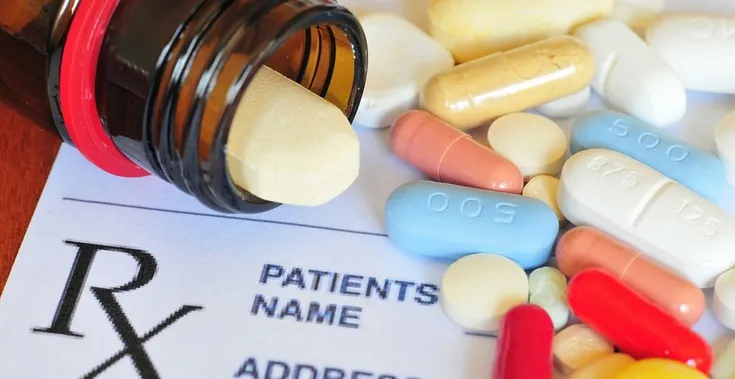The acceleration of pharmaceutical innovation in recent years has helped save and improve countless lives. At the same time, the vulnerability of supply chains — pharmaceutical and commercial — has become even more evident amid the COVID-19 pandemic. These are among the many reasons why today is both an exciting and challenging time to practice in the profession of pharmacy.

Ronald Piervincenzi
At the U.S. Pharmacopeia (USP), we’re working to help manufacturers, regulators, health care providers and others ensure quality throughout the pharmaceutical product life cycle, from development through distribution. We’re developing standards and related solutions to identify and address supply chain vulnerabilities; support the development of newer treatment modalities such as biosimilars; reduce the potential for impurities in medicines; and advance health literacy through appropriate drug labeling. These efforts hold great promise to continue to expand the global supply of quality medicines in sync with pharmacists’ vital work for the benefit of patients.
Supply chain resilience
Throughout the COVID-19 pandemic, pharmaceutical supply chains proved more resilient than those of many other products. Even so, long-standing vulnerabilities — including the potential for drug shortages — were made more evident. The recent, widely reported shortage of the antibiotic amoxicillin is just the latest reminder of medicine supply chain vulnerabilities that can impact patient care. The increasingly global nature of the pharmaceutical supply chain means that events such as natural disasters, geopolitical events, emerging public health crises and quality-related issues in manufacturing in one part of the world can affect the availability of medicines everywhere.
USP is uniquely positioned to help, offering more than 7,500 standards that define quality expectations for drug products. USP’s rigorous scientific approach to public standards development helps enable the consistency of quality and availability of quality medicines no matter where they are manufactured.
Leveraging insights from data on USP standards distribution and usage at more than 22,000 locations worldwide and 40 external data sets, USP launched the Medicine Supply Map in 2021 to provide an early-warning capability for supply chain vulnerabilities. Composed of more than 250 million data points spanning 92% of generic medicines approved in the U.S., USP’s Medicine Supply Map enhances visibility into the upstream supply chain to help governments, manufacturers, distributors and providers identify, characterize and quantify supply chain vulnerabilities, guide risk mitigation strategies and reduce the frequency and duration of potential drug shortages.
A recent analysis by USP’s Medicine Supply Map team showed that antibacterials (a type of medicine that includes amoxicillin) are 42% more likely to be in shortage than the average drug product. Out of the 128 antibacterial drug products marketed in the U.S., over 15% were found to be in shortage. Given the challenge posed by antimicrobial resistance — named one of the top 10 global health threats facing humanity by the World Health Organization and associated with nearly 5 million deaths in 2019 — it’s critical to have visibility in the supply chain for antibacterials and other antimicrobial medicines used to prevent and treat infections.
Building trust in biosimilars
The advent of newer treatment modalities, including biosimilars — which are biological products that are highly similar to brand-name biologics and that may offer more affordable treatment options for a range of conditions, similar to generic drugs — also holds great promise to help increase availability of quality medicines. Building on advancements in biologics in recent decades, biosimilars are gaining increased attention for their ability to offer the potential for more affordable treatments for conditions ranging from diabetes to cancer.
Together with the Food and Drug Administration and informed by members of the USP Convention, USP recently launched an educational infographic to help foster informed conversations between practitioners and patients about biosimilars quality. The infographic points out that “biosimilars have no clinically meaningful differences from their reference product in terms of safety, purity and potency.”
To help expand the supply of biosimilars, USP provides materials and quality standards manufacturers can use to develop, validate and monitor analytical methods. For biologics in mature product segments with significant opportunities for biosimilar development, such as monoclonal antibody (mAb) treatments, the biotech industry uses platform approaches — with one approach potentially applying to multiple medicines — to bring products to market. To help manufacturers ensure biological treatment quality from raw materials testing through production and release testing, we have adapted our work on biosimilars to focus on these platforms and technologies with standards and tools that apply to a related group of products rather than a specific product. For example, USP mAb Reference Standards are representative of production methods and quality attributes in developed products and can be used in platform analytics for development of biosimilar mAbs.
Impurities in medicines
The recent U.S. recall of two lots of the hypertension medications quinapril and hydrochlorothiazide has put a separate medicines quality concern — the issue of nitrosamine impurities — back in the spotlight. Nitrosamine impurities can potentially form in a variety of ways during the life cycle of a drug’s development and manufacturing, and pose cancer risks if people are exposed to them above certain levels and over long periods. Starting in 2018, the presence of nitrosamine impurities was identified in some angiotensin II receptor blockers used to treat high blood pressure and heart failure, and they were subsequently found in additional drug products.
When such quality issues emerge, USP standards can help regulators, manufacturers and other stakeholders better understand the threat the issues pose and how to control them. USP developed solutions that provide information, tools and recommendations to help users understand potential sources of nitrosamine impurities, assess risk and establish strategies and suitable methods to control them in pharmaceutical products. USP also developed related resources, including education and training, and the growing Nitrosamines Exchange online community of 2,000+ active members, to facilitate knowledge sharing and support manufacturers and regulators in this area. These efforts dovetail with those of the FDA and other global regulatory agencies, which have issued related public health alerts and guidance documents for manufacturers related to nitrosamine impurities.
The threats to the global medicines supply chain posed by impurities are too great for any single organization to take on alone, and USP is proud to play a leading role by providing quality standards, training, information and other resources to help meet the challenge.
Drug labeling and health literacy
In order for patients to achieve the full benefits of life-changing medicines, the importance of quality goes hand-in-hand with appropriate use. This is made possible in part through drug labeling that facilitates health literacy. With medication misuse estimated to result in more than 1 million adverse drug events each year in the U.S., recent and upcoming changes to drug labeling are intended to facilitate understanding, support health care provider interactions with patients and reduce medication errors.
Beginning in September 2023, an updated USP standard on expiration date formatting will require placement of a four-digit year at the beginning of the date format to help prevent the potential for confusion about dates and lot numbers. The change will impact prescription drugs as well as over-the-counter medications and dietary supplements that meet USP monograph standards, aiming to improve medication safety and reduce risks associated with the use of expired medications.
The changes build on existing USP prescription container labeling standards, including revisions implemented in 2021 to add a framework for opioid labels aimed at mitigating misuse of the pain medication, and to provide an algorithm for dosing tools (such as oral syringes) that promotes accurate dosing of pediatric medications to help reduce unintentional underdosing or overdosing of children.
At USP, we are proud to continue our work with pharmacists and other stakeholders across the pharmaceutical supply chain. As we have for more than 200 years, we will continue to evaluate and address emerging public health priorities, and seek opportunities to provide new public standards and quality-focused solutions that expand the supply of quality medicines for patients around the world.
Ronald Piervincenzi is chief executive officer of U.S. Pharmacopeia (USP).









